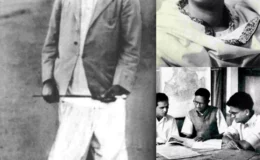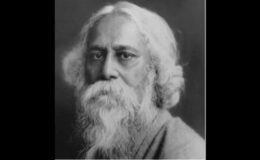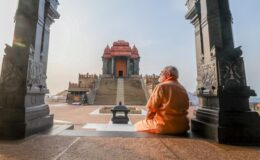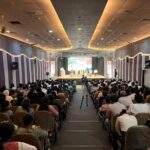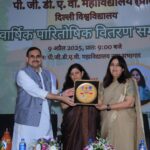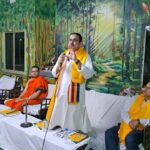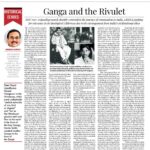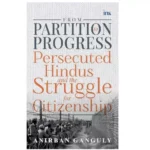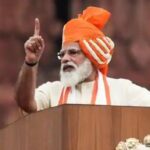Pali: The Civilisational Bridge Connecting India To Its Global Buddhist Heritage
- By : Anirban Ganguly
- Category : Articles
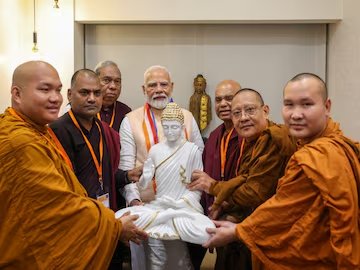
As it evolved as a key language in our cultural, religious, and spiritual life, Pali emerged as a major civilisational bridge, fostering religious and cultural connections between India and Southeast Asia.
The conferring of classical language status on Pali by Prime Minister Narendra Modi has received widespread approbation across the Buddhist world. From India’s neighbourhood to the countries of Southeast Asia, this recognition has generated enthusiasm. One scholar-monk from Sri Lanka, speaking effusively at the inaugural session of the recently concluded conference in Sarnath on ‘Pali: India’s Classical Language and the Legacy of the Buddha’, described how Pali contributed to the cultural and spiritual regeneration of Sri Lanka. Scholars have shown that Pali is ‘crucial to the understanding of the linguistic evolution of India and Southeast Asia.’
The conference, organised by the Maha Bodhi Society of India, the Anagarika Dharmapala International Institute of Pali and Buddhist Studies, and the Dr Syama Prasad Mookerjee Research Foundation, took place at the historic Mulagandha Kuti Vihara in Sarnath, in the shadow of the Dhamek Stupa. Many eminent scholars expressed similar views at the event.
In each country it reached, Pali displayed a unique ability to integrate with local languages, enabling a two-way enrichment that nurtured a ‘unique literary culture.’ Pali was accessible to all and meant for all. Its simple, direct structure made it comprehensible to the lay seeker and householder. As it evolved as a key language in our cultural, religious, and spiritual life, Pali emerged as a major civilisational bridge, fostering religious and cultural connections between India and Southeast Asia. This encouraged the growth of shared cultural narratives and a shared spiritual lineage. That link will now be further revitalised with the conferring of classical language status.
In his address at the ‘Abhidhamma Divas’ celebrations in early November, Prime Minister Narendra Modi spoke of Pali’s centrality to the great legacy of Lord Buddha. “To understand the essence of Dhamma, knowledge of the Pali language is essential,” and it is our “collective responsibility to preserve and promote this language,” PM Modi emphasised. He pointed out that today, the “ancient language of Pali, in which the original words of Lord Buddha exist, is no longer in common use.” Language, PM Modi argued, “is not just a medium of communication, but also the soul of civilisation and culture, with each language carrying its own essence.” Keeping Pali alive, he said, “is to keep the words of Lord Buddha alive in their original spirit.”
The status of Classical Language opens up a vast vista of opportunity for the spread and popularisation of Pali. It allows for further research in a rapidly evolving age of technology, digitisation, and artificial intelligence. The National Education Policy (NEP), with its emphasis on Indian languages, also offers immense potential for the development and preservation of languages such as Pali. Its gradual implementation will further create the environment and framework for this purpose.
Numerous scholars have spoken of Pali as creating a legacy of interconnectedness. This interconnectedness is especially felt in those countries which, to borrow an expression from Singapore’s veteran scholar-diplomat Kishore Mahbubani, have an ‘Indic cultural foundation.’ This ‘Indic cultural foundation’ nurtured and sustained the conditions that allowed Pali to emerge as a linguistic-cultural heritage, linking these countries with the birthplace of Buddha and Buddhism, India. This connection remained reinforced and nourished through the challenges of centuries.
In the early years after independence, Dr Syama Prasad Mookerjee, then serving as the President of the Maha Bodhi Society of India, among his numerous other roles, spoke of India assuming the “role of the spiritual mother” for these countries. He called for re-establishing “bonds of friendship and understanding with them with a true sense of humility and responsibility.” Pali, therefore, was India’s gift as ‘the spiritual mother’ to the world, a gift that could have been used to renew these links.
Yet, despite symbols of Lord Buddha being adopted at the time of independence, these were gradually forgotten, and no significant interest was shown by those in power in their preservation and promotion. This neglect, as Prime Minister Modi emphasised, occurred because India was “taken over by an ecosystem that worked to push the nation in the opposite direction.” The civilisational truth, as he argued, that “the heritage of language, literature, art and spirituality of any society defines its existence,” was abandoned and neglected in a free India. This happened despite an active effort in pre-independence India to engage with Pali and the legacy of the Buddha, led by Indian scholars and intellectuals.
The conferring of Classical Language status on Pali is also a tribute to many scholars and giants in the field of Buddhist studies. Anagarika Dharmapala’s (1864-1933) legendary contributions included a focus on the revival of Pali studies across India and the world. The name of Asutosh Mookerjee (1864-1924)—a formidable educationist, thinker, mathematician, and towering public intellectual of modern India, who was also a legendary Vice Chancellor of the University of Calcutta—comes to mind. It is fortuitous that in this centenary year of his passing, Pali has been recognised as a Classical Language. During his first term as Vice Chancellor of the University of Calcutta, from 1906 to 1914, Asutosh Mookerjee established the Department of Pali at the University in 1907, the first of its kind in Indian higher education at the time. Later, the eminent Professor Beni Madhav Barua (1888-1948) became one of its finest academic leaders. Asutosh Mookerjee’s contributions to the promotion of Buddhist studies and the preservation of the Buddha’s legacy in India, as President of the Maha Bodhi Society of India from 1911 to 1924, should also be remembered on this occasion.
Another name that necessarily comes to mind is the formidable Rahul Sankrityayan (1893-1963), whom the author of the classic Hindu Polity, K.P. Jayaswal, described as being recognised by the Sangha as Tripitakacharya on account of his profound knowledge of Buddhist scriptures, while the Pandit-Sabha of Banaras honoured him with the title of Mahapandita. For his indefatigable contributions, Jayaswal noted, Sankrityayan’s name “will be cited with gratitude by the writers of Indian philosophy and Buddhism.”
Jayaswal has left us a moving description of Sankrityayan’s herculean efforts to recover and translate Buddhist texts. “Sankrityayan, between his travels,” writes Jayaswal, “produces in a few months large tomes of Hindi translations of Pali Tripitakas. He sits down and works for many hours at a stretch. His labour is almost superhuman in writing and that terrible work of proof-reading…He has written the best book on the life of Buddha (Buddhacharya). His knowledge of Indian epigraphy is so great that I often consult him on inscriptions. His general knowledge is very wide…In Sanskrit, he is as facile as in Hindi. His articles have been translated into French by Prof [Sylvain] Levi and published in the Journal Asiatique. Not a minute of his is idle.”
Drawing a meaningful parallel, PM Modi reminded us that both Pali and Marathi, besides other languages, have been conferred Classical status, noting that “Babasaheb Ambedkar, whose mother tongue was Marathi,” was also a devoted adherent of Buddhism and “received his Dhamma Diksha in Pali.”
These historical links are inspiring and will serve to rekindle interest in the civilisational significance of Pali, rejuvenating its study and paving the way for deeper, more fundamental research—an essential undertaking of our times. This is a shared national responsibility.
